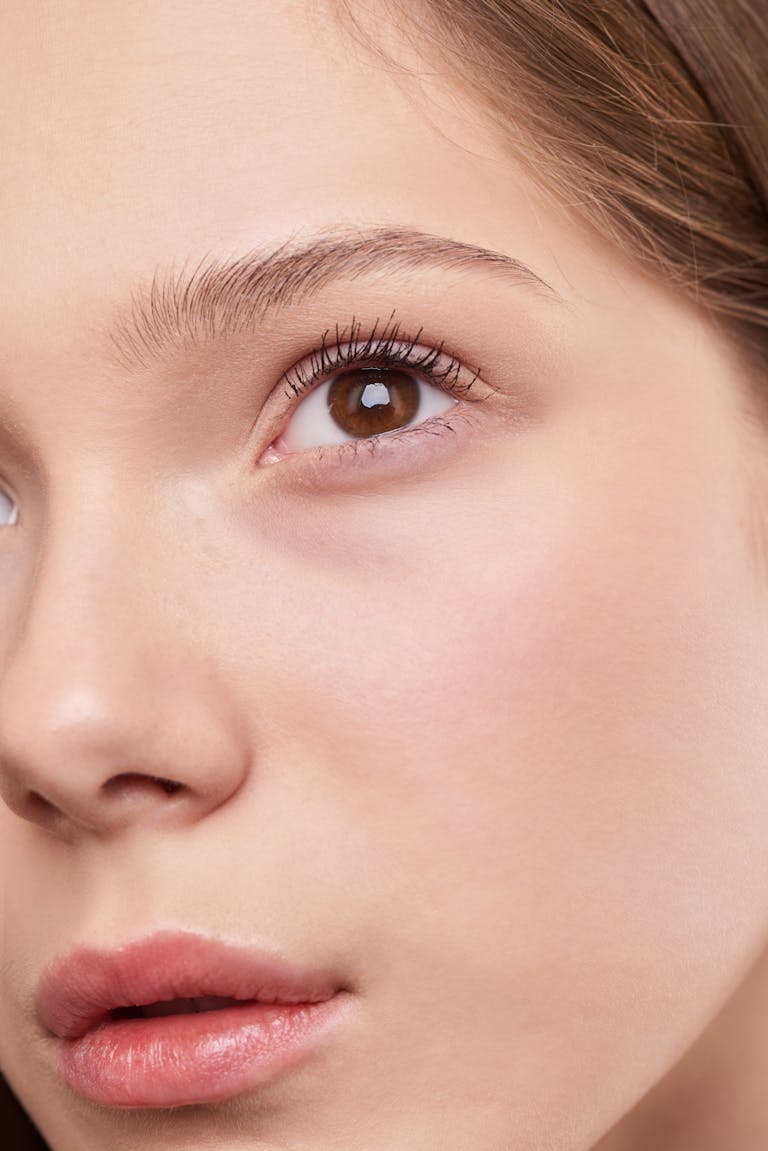10 Essential Skincare Tips for Oily Skin
If you’re dealing with oily skin, you’re not alone, and finding the right skincare routine can make all the difference. Here are 25 clear tips to help you tackle excess oil and achieve that fresh, matte look. From choosing the right products to adopting good habits, these practical tips will guide you toward clearer skin without any fuss.
Hydration Myths: Why Oily Skin Needs Moisturizer
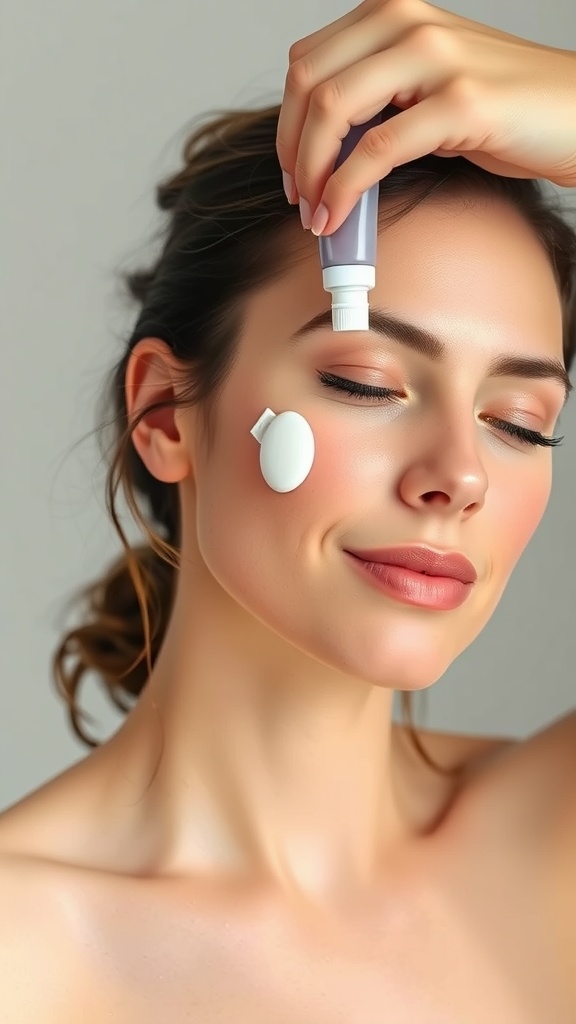
Many people with oily skin think that moisturizer is a no-go. They believe slathering on creams will only make their skin greasier. This is a common misconception. The image we see here shows a person applying a moisturizer, highlighting the importance of hydration for all skin types, including oily skin.
Oily skin can be tricky. It often feels like there’s enough oil on the surface, so adding more products seems unnecessary. However, skipping moisturizer can lead to dehydration. When your skin is dehydrated, it can overproduce oil to compensate, creating a slippery cycle. So, keeping your skin hydrated is key!
Using a lightweight, oil-free moisturizer can help balance your skin. It provides essential hydration without the heaviness. Look for ingredients like hyaluronic acid or glycerin. They are great in drawing moisture into the skin without adding extra oil.
So, don’t shy away from moisturizer! Embrace it to keep your skin healthy and balanced. Remember, hydration is crucial for maintaining that lovely glow.
Spot Treatments for Acne and Breakouts
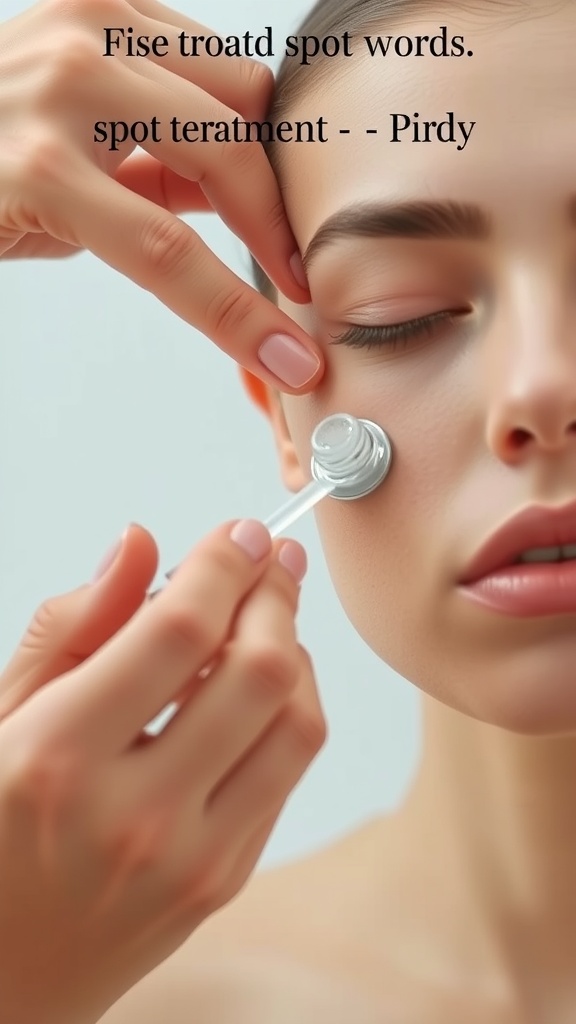
When it comes to managing oily skin and preventing breakouts, spot treatments can be a lifesaver. The image shows a person applying a spot treatment to the skin, highlighting how targeted applications can be effective.
Spot treatments are designed to tackle individual pimples and blemishes. They usually contain powerful ingredients like salicylic acid or benzoyl peroxide, which help to reduce inflammation and clear acne. Applying these directly to the affected areas can help speed up healing.
It’s important to use these treatments sparingly. Just a small amount applied to the breakout can do the trick. Overuse can lead to irritation, which is something we definitely want to avoid.
Also, remember to patch test any new product to see how your skin reacts. Finding the right spot treatment can make a huge difference in your skincare routine!
Understanding Oily Skin Types
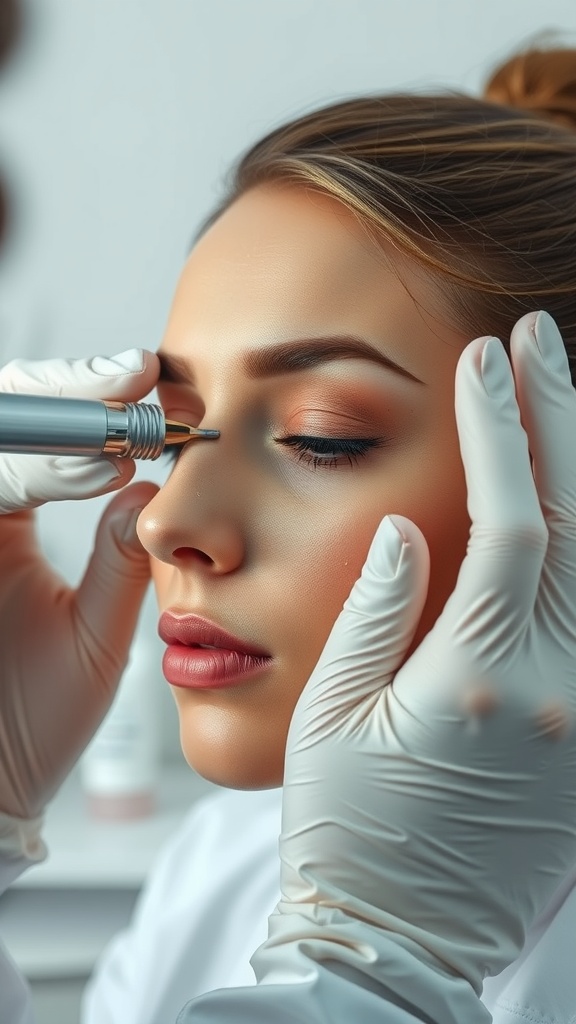
Oily skin can be a bit of a challenge, but understanding it is the first step to managing it. When the skin produces excess sebum, it results in that shiny appearance. This often leads to clogged pores and breakouts, which can be frustrating.
The image captures a professional skin treatment session. A skincare expert is applying a treatment on a client’s skin, showcasing a hands-on approach to addressing oily skin issues. Treatments like these can help balance oil production and clear up the skin.
People with oily skin often notice enlarged pores and may struggle with conditions like acne. Finding the right skincare routine is key. Ingredients like salicylic acid and clay masks can be beneficial, while avoiding heavy creams is advisable.
Taking good care of oily skin means staying consistent. Regular cleansing and exfoliating will help keep the skin in check. With the right knowledge and care, anyone can improve their oily skin condition.
Importance of a Consistent Skincare Routine
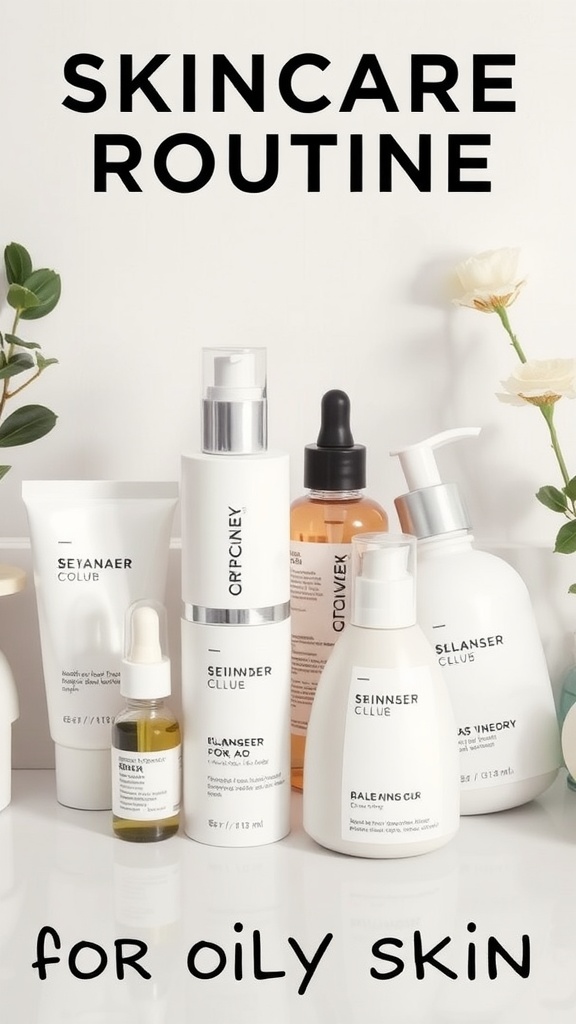
Having a consistent skincare routine is key for anyone with oily skin. The right products can help balance oil production and keep your skin looking fresh.
The image highlights a variety of skincare products specifically designed for oily skin. From cleansers to serums, each item plays a role in maintaining a healthy complexion. It’s like having a little team dedicated to your skin!
Using products in a consistent order ensures that they work effectively together. Cleansing removes excess oil, while toners and moisturizers help keep the skin hydrated without adding extra greasiness.
Regular use of these products can also help prevent breakouts, which is often a concern for those with oily skin. When you stick to your routine, you give your skin the best chance to glow!
So, whether you’re just starting out or looking to enhance your current routine, remember that consistency is key. Your skin will thank you!
Choosing the Right Cleanser for Oily Skin
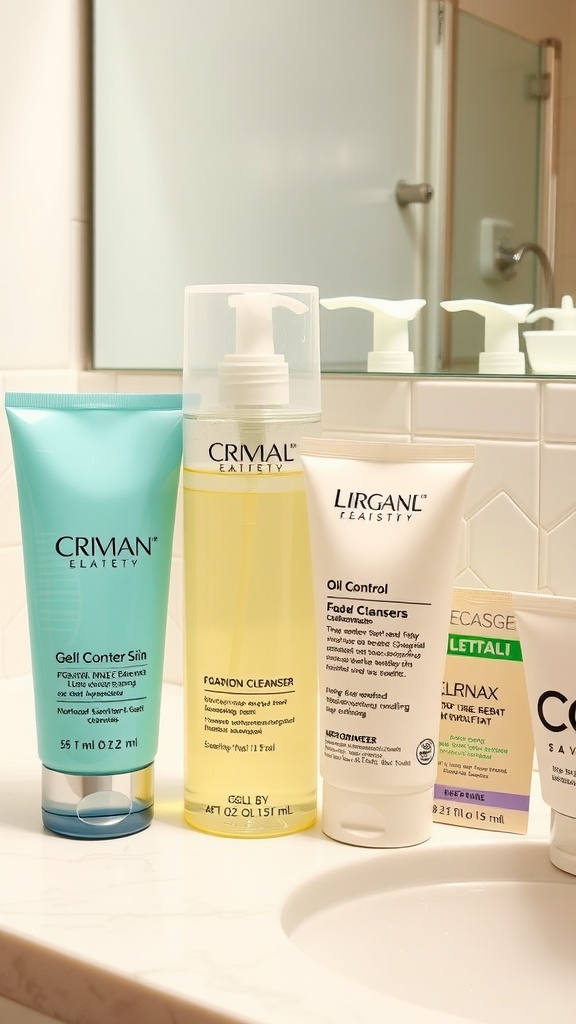
Finding the right cleanser can make a huge difference for those with oily skin. The image showcases a variety of cleansers, each with its unique purpose. Let’s go through what you should look for when choosing your perfect match.
First up, look for a gel-based cleanser. These types are often lightweight and effective at removing excess oil without stripping your skin. The green gel in the image is a great example of this. It helps control shine while keeping your skin hydrated.
Next, consider a foaming cleanser. The clear bottle in the image indicates a formula that can deeply cleanse while keeping your pores clear. Foaming cleansers often have ingredients that target oiliness and can leave your skin feeling fresh.
Don’t forget about exfoliating properties! A cleanser that contains gentle exfoliants can help remove dead skin cells and prevent clogged pores. The product labeled ‘Oil Control’ in the image could be beneficial in this regard.
Lastly, look for products that are non-comedogenic, meaning they won’t clog your pores. This is crucial for oily skin types to avoid breakouts. Check the product labels carefully.
Sunscreen Choices for Oily Skin
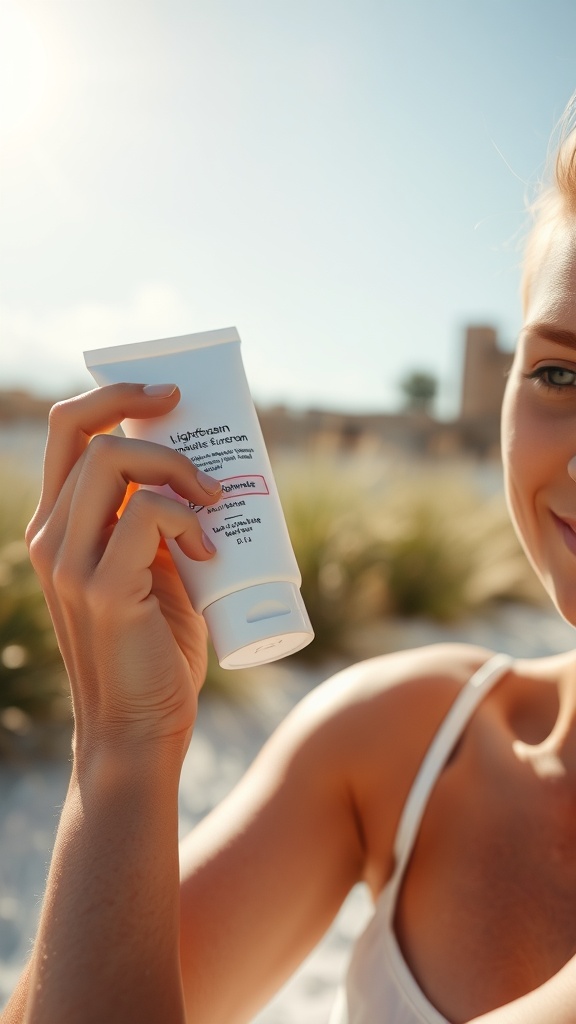
Finding the right sunscreen for oily skin can be tricky. The image shows a person holding a lightweight sunscreen, perfect for those who struggle with excess oil. Look for formulas labeled ‘oil-free’ or ‘matte finish’ to keep shine at bay.
When choosing a sunscreen, consider options that are non-comedogenic. This means they won’t clog your pores, which is essential for oily skin types. A gel or lotion formula can feel lighter and provide better absorption.
Ultralight sunscreens often come in a fluid or gel form, making them ideal for oily skin. They absorb quickly and leave a matte finish, so your face doesn’t look greasy.
Remember, broad-spectrum protection is key. This ensures you’re shielded from both UVA and UVB rays. Daily application is a must, even on cloudy days, to keep your skin safe.
Exfoliation Techniques to Reduce Oiliness
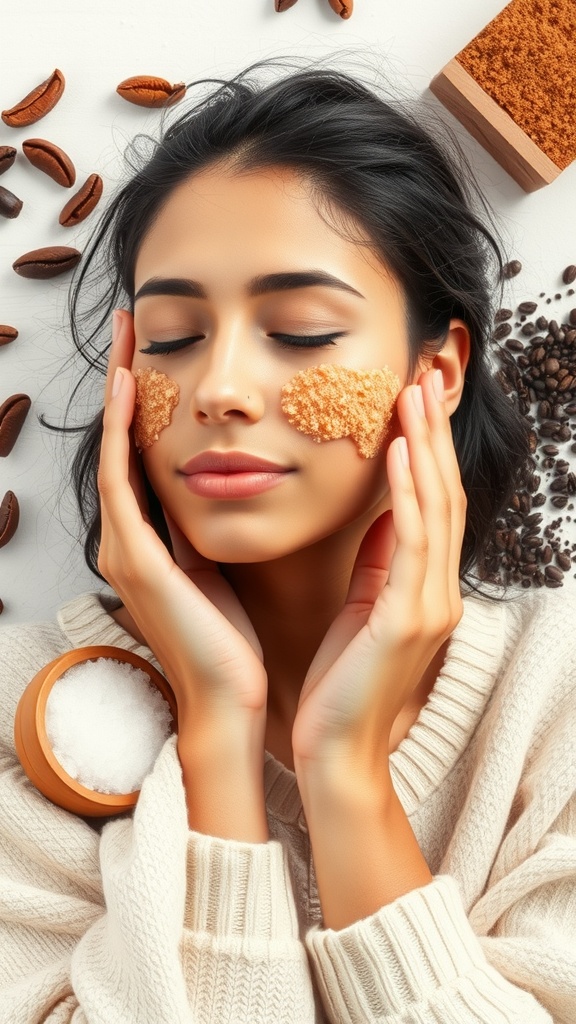
Exfoliation is a key step for those with oily skin. It helps to remove dead skin cells and excess oil, keeping your complexion fresh and clear. In the image, we see someone enjoying a gentle exfoliation treatment. The natural ingredients used, like coffee and sugar, can be great for this purpose.
Using a scrub with these ingredients can invigorate your skin. The coffee grounds provide a mild abrasive effect, which helps to slough off those stubborn dead cells. Meanwhile, sugar can act as a natural humectant, drawing moisture into the skin while exfoliating.
It’s important to exfoliate regularly, but not too often. Doing it once or twice a week is typically enough to keep oiliness in check without irritating your skin. Remember to choose products that suit your skin type and avoid harsh chemicals. Instead, look for gentle, natural options.
And don’t forget to follow up with a moisturizer! Even oily skin needs hydration. Using a lightweight, oil-free moisturizer will keep your skin balanced and happy.
The Role of Toners in Oily Skin Care
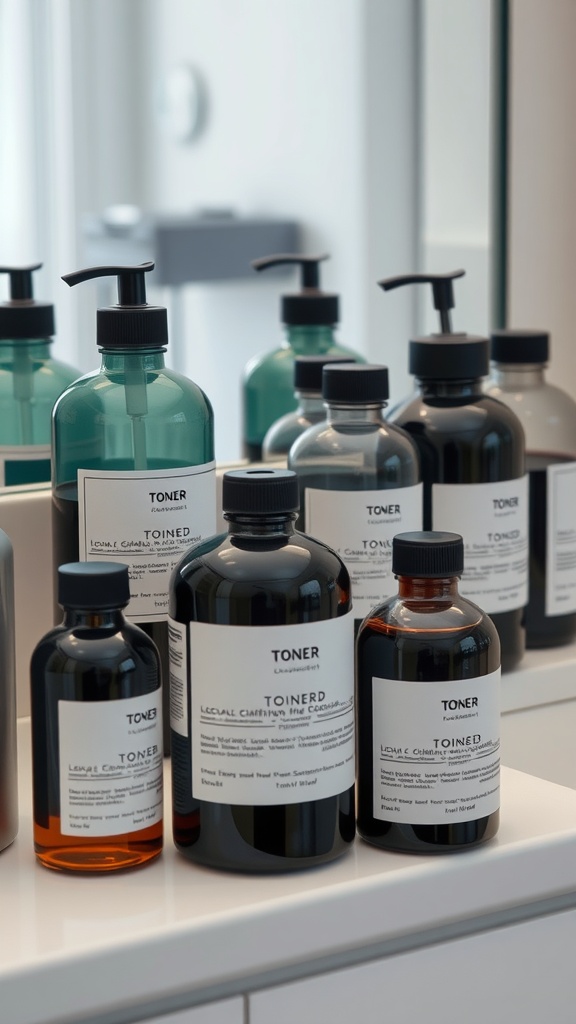
Toners are an essential step in the skincare routine for those with oily skin. They help balance the skin’s pH after cleansing, which can sometimes strip away natural oils. The image showcases various bottles of toner, each designed to target specific skin concerns. You’ll notice that some are labeled for hydration, while others focus on exfoliation or oil control.
Using a toner can refresh your skin and prepare it for the rest of your skincare products. For oily skin, look for toners containing ingredients like witch hazel or salicylic acid. These components help in controlling excess oil and minimizing the appearance of pores.
It’s easy to integrate toners into your routine. Simply apply them with a cotton pad after cleansing, or spritz them directly onto your face. This step can make a big difference in how your skin feels and looks throughout the day.
Incorporating the right toner can transform your skincare experience. So, keep an eye out for those that cater specifically to oily skin needs!
Nighttime Skincare Rituals for Oily Skin

Taking care of oily skin at night is key to keeping it balanced and healthy. The image shows a person applying a skincare product in front of a mirror. The soft lighting creates a calming atmosphere, perfect for winding down and focusing on self-care. This moment highlights the importance of a consistent nighttime routine.
Start by thoroughly cleansing your face to remove dirt and excess oil. A gentle foaming cleanser works wonders. Next, consider using a toner with ingredients like witch hazel or salicylic acid. This step helps tighten pores and prep your skin for further treatments.
After toning, applying a lightweight serum can be very beneficial. Look for one that helps control oil production or contains niacinamide. This can help reduce shine and improve skin texture over time. Finally, finish with a non-comedogenic moisturizer. This ensures your skin stays hydrated without clogging pores.
Dietary Influences on Oily Skin

Your diet plays a significant role in how your skin looks and feels. When it comes to oily skin, certain foods can either help or hurt your skin’s condition. The colorful spread of fruits and vegetables in the image highlights the importance of healthy eating. Fresh produce is packed with vitamins and antioxidants that support skin health.
A diet rich in fruits and vegetables can help to keep your skin clear. Foods like bananas, tomatoes, and leafy greens provide hydration and nutrients that help balance oil production. Foods high in sugar and saturated fats, on the other hand, can trigger excess oiliness and breakouts.
For those with oily skin, incorporating foods with omega-3 fatty acids, such as nuts and seeds, can also be beneficial. These healthy fats help reduce inflammation and promote a more even skin tone. Drinking plenty of water is just as important, as staying hydrated helps to regulate oil production.
Incorporating a variety of colors in your meals, as shown in the image, can be a fun and effective way to ensure you’re covering all your nutritional bases. Keep snacks light and packed with nutrients, like fresh fruit or a small handful of nuts. By focusing on these dietary influences, you can effectively manage oily skin and promote a healthy glow.

